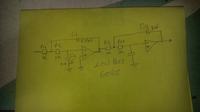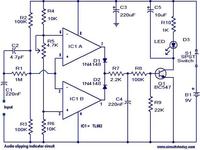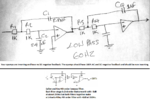Enzy
Advanced Member level 1
I bought 2 assembled boards on ebay built around IRs2092, not sure if I can share that link here, its for 2 mono amplifiers it says 700 watts @ 4ohms not sure if thats peak or RMS, not sure if it will produce that though I think its a class D amplifier I havent received, I hope the heat sink is good enough for that power if it can deliver it.
I am going to use it to play bass and I am now doing some reading on cross overs normally in cross overs I see big coils and big resistors and capacitors, I would see them in stores in my country but they are never labeled so I have no clue what they are for and should be used on but I would think those types are passive cross overs, based on my readings active cross over would be the better choice.
I do not know if there is a limitation to cross overs like that meaning, I saw a circuit online which I would like to use but because It is so simple I am wondering if by some chance it will limit the power.
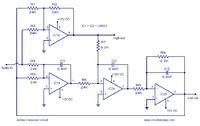
for example using my laptop as the signal source I would go from my laptop to this cross over then out to the amplifier? Also I would only use the low side since I only need bass so only the bass signals would be amplified that seems like the best way based on the readings.
This is a project also how would I add volume control to this, I would need to know the input resistance to put a pot before the cross over but not sure how to determine that.
I plan to add a clip light detector circuit and a VU meter to this, is there any other feature thats good to include in n amplifier like protection.
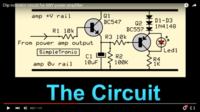
Clip light detector.
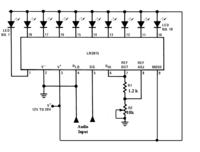
Vu meter.
I am going to use it to play bass and I am now doing some reading on cross overs normally in cross overs I see big coils and big resistors and capacitors, I would see them in stores in my country but they are never labeled so I have no clue what they are for and should be used on but I would think those types are passive cross overs, based on my readings active cross over would be the better choice.
I do not know if there is a limitation to cross overs like that meaning, I saw a circuit online which I would like to use but because It is so simple I am wondering if by some chance it will limit the power.

for example using my laptop as the signal source I would go from my laptop to this cross over then out to the amplifier? Also I would only use the low side since I only need bass so only the bass signals would be amplified that seems like the best way based on the readings.
This is a project also how would I add volume control to this, I would need to know the input resistance to put a pot before the cross over but not sure how to determine that.
I plan to add a clip light detector circuit and a VU meter to this, is there any other feature thats good to include in n amplifier like protection.

Clip light detector.

Vu meter.
